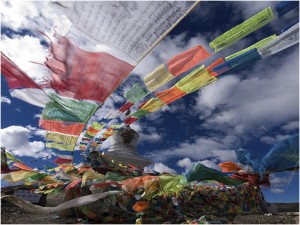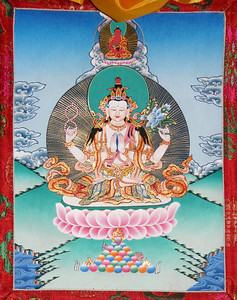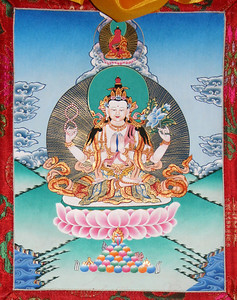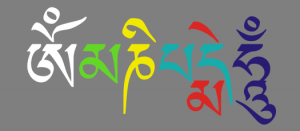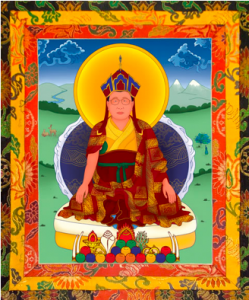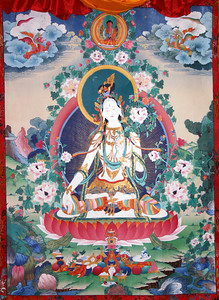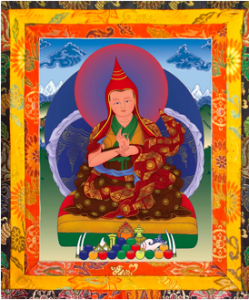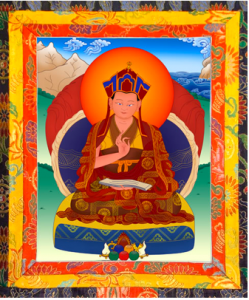The Tibetan Buddhist New Year celebration called LOSAR is a day of joyfully welcoming in the New Year.
The celebration begins two days prior with GUTOR, a day where one reflects back on the past year and any mistakes that have been made. Practice is done to avert the negativity of the past year.
On the eve of the New Year, time is spent cleaning the home and Temple. This represents joyfully sweeping away the past negative karma and preparing for the many blessings that the New Year will bring.
LOSAR is a time of happiness, joyful effort and celebration. The first month of the New Year is regarded as very auspicious and is referred to as “the month of display of Enlightened Activities” or miracles of the Buddha. In particular, on the first 15 days Lord Buddha Shakyamuni performed a miracle each day to increase the merit and devotion of future disciples. Below is an account of one such miracle as described by the Venerable Khenpo Karthar Rinpoche:
At one time the Buddha was invited to share in a festival. It was then traditional (as it still is in India) for people to brush their teeth with a piece of twig. This was considered very healthy for your gums and teeth. So the Buddha was brushing his teeth with a twig. It was the custom to keep it in your mouth a long time and then to brush with it. When the Buddha took the twig out of his mouth, he put it into the ground like planting a tree, and with that action, some 500 miles were covered by fruit trees in an instant. Those who had no food could partake of some. The Buddha was making connections through this act. A number of people who were overwhelmed by the power of ego fixation, pride and arrogance could not appreciate the teachings. They were very critical, so when the teachings were being presented (just as they are being presented now), all they could offer were a lot criticisms. They said that the Buddha could not stand being a king, so he went wandering, and that as a meditator he could not keep up with that, so he came back into the world. They said he knew how to say all of these things because he was prince, a king. And on and on they criticized. These people could not hear or appreciate the teachings; therefore, the Buddha had another style in which the teachings could manifest: the planting of this twig and the miracle that resulted. This got their attention.
On each of the fifteen days the virtue or non-virtuous activity is multiplied by 100,000 times with the exception of the 15th day, Chotrul Duchen, on which it multiplies by 10 Million times.
This year Losar took place on March 5th.
